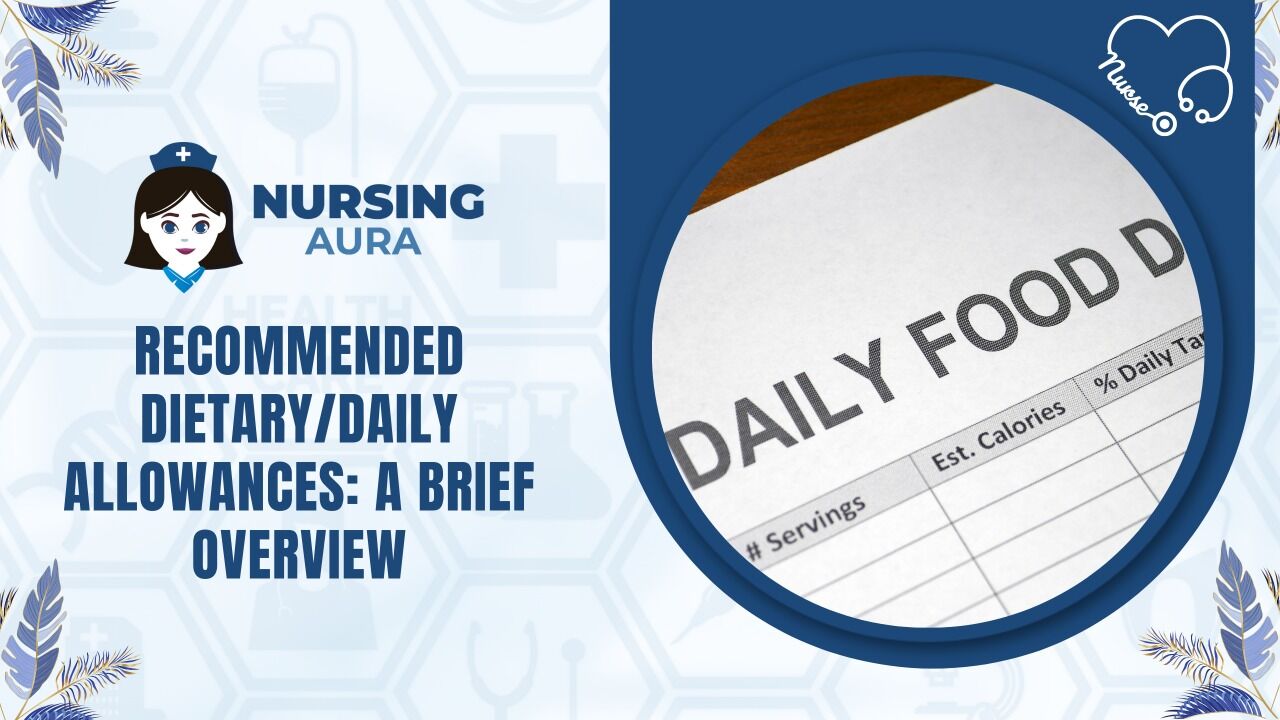The Recommended Dietary Allowances (RDAs) are the nutritional consumption levels determined by the Food and Nutrition Board to be adequate to meet the known dietary needs of virtually all healthy persons, based on scientific evidence.
Foundation Of Dietary Recommendation
Dietary recommendations for nutrients are intended to be consumed on a daily basis. Consequently, it is essential to take into account any element that influences the absorption or utilization of food components. For many nutrients, a portion of the requirement might be supplied by consuming a substance that is converted into the essential nutrient within the body.
Some carotenoids, for instance, are precursors of vitamin A; while some or all of the vitamin A shortage can be addressed by dietary carotenoids, the efficiency with which these precursors are converted into vitamin A must be considered.
The protein allowance is stated as if it were the recommended dietary allowances (RDAs) for a single dietary component. It is the total of the varied requirements for a few amino acids that occur to varying degrees in diverse dietary proteins.
For some nutrients, digestion, absorption, or both are incomplete, and dietary recommendations must account for the portion of the ingested material that is not absorbed.
For example, the absorption of heme and non-heme iron varies; it is impacted by other dietary components that are taken into account when calculating the RDA. The relevance of these parameters varies from nutrient to nutrient.
Consequently, the amount by which the RDA, a dietary allowance, exceeds the physiological requirement varies among nutrients.
In general, Recommended Dietary Allowances (RDAs) are established for essential nutrients only when sufficient information exists to provide trustworthy recommendations.
How Will RDAs Be Met?
Due to uncertainties in the information base, it is not possible to assign RDAs for all nutrients known up to this point. In any event, the RDAs can serve as a guide, with the expectation that a diet that meets the RDAs will suffice for the remaining nutrients.
Consequently, the subcommittee proposes that diets should be comprised of a diversity of food sources from different nutrition classes, as opposed to supplementation or reliance, and any nutritional disasters during food processing and preparation must be taken into account while creating the diet.
Different types of diets can be devised to satisfy perceived dietary needs. Nonetheless, RDAs should be provided from a variety of adequate and enticing food types to ensure consumption. In addition to being a source of nutrition, food has major mental and social properties that are difficult to define.
RDAs correspond to physiological requirements when these are known. In general, the RDA councils will find in favor of liberality because there is little evidence that small overabundance of nutrients are uncomfortable, whereas consistent, uncompensated shortfalls, even of small amounts, over an extended period can lead to deficiencies.
Individual deficiencies have been accounted for in terms of nutritional RDA status. Such shortages can be prevented or remedied by the quantities of nutrients provided by a diet consisting of a great deal of chopped food. In the few instances when deficiency is commonly observed, such as iron deficiency in women, food fortification and individual supplementation are appropriate.
Use Of Recommended Dietary Allowances
Fundamental to all RDA applications is the recognition that individuals are extremely adaptive. Throughout its existence, the human race has developed administrative and capacity components that enable it to adapt to a range of environments and endure adversity. These key organic considerations, in conjunction with the fact that the RDAs have safety margins, are the prevailing considerations that should guide the client in implementing the recommended dietary allowances (RDAs) in particular situations.
Participation in RDA employment and abuse has revealed that several regions demand elaboration and clarification. These are discussed below.
- In the Summary RDA Table at the conclusion of this volume, nutrient intakes are referred to as daily Reference Individual amounts. After some time, the expressions each day and every day should be interpreted as typical intake. The duration of time that should be used for averaging depends on the nutrient, the size of the body, and the efficacy of the nutrient. Some nutrients, such as vitamin A and B12, can be stored in reasonably large quantities and degrade gradually.
- Others, such as thiamine, are rapidly metabolized, and extreme adversity in an individual can prompt the somewhat speedy development of side effects (i.e., in days or weeks, as opposed to in months). If the requirement for a particular nutrient is not met on a particular day, body stores or an excess consumed today will compensate. For the majority of supplements, the RDA is assumed to be the average intake over at least three days; for others, such as vitamins A and B12, it may be the average intake over an extended period of time.
- People’s nutrient intake varies from day to day and varies for different nutrients. For example, the daily variance in the consumption of protein and thiamine is minimal, whereas the variance in the consumption of vitamin A is unusually high. A person who consumed a small amount of a particular nutrient on one day may consume a substantial amount on the next day. The middle value of admission must be exact to the period.

